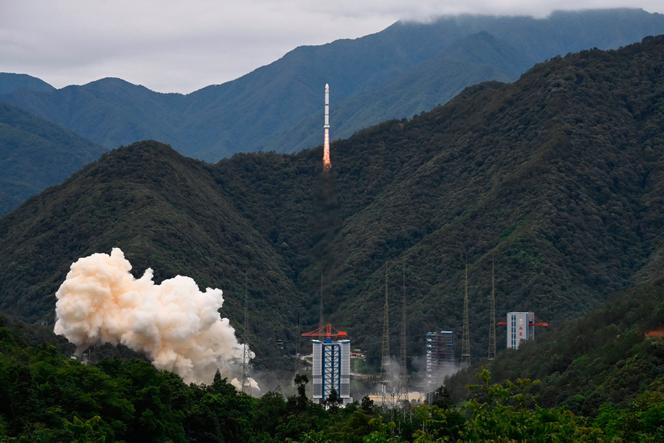


Five, four, three, two, one... In the middle of a valley in Sichuan, western China, flames billowed out from the rocket boosters. The Long March 2-C rocket lifted off its launch pad, soared off with an earsplitting noise and quickly disappeared into the low clouds. The roar faded and the smoke dissipated. The men and women in the bright blue uniforms of China's National Space Administration, who had initially looked stressed out, now appeared to be pleased. As if accustomed to seeing so much advanced preparation disappear into the sky in a matter of seconds. China has planned to carry out around 100 launches this year, after 67 in 2023. That's fewer than those by the Americans (109), thanks to SpaceX, but far more than any other country (Russia was third with 19 launches).
On Saturday, June 22, the rocket from the Xichang base carried a French-Chinese satellite, SVOM. Behind this strange name lies an ambitious mission to observe gamma-ray bursts, those colossal emissions of energy that occur notably during the death of giant stars and which took place billions of years ago, only reaching us now. Further study of these emissions could shed light on the history of the universe. The project has been 18 years in the making, the product of joint work by France and China. Having now been put into place, the satellite will soon be able to detect the rays, yielding information that astronomers on the ground will be able to study.
Hot on the heels of this launch celebration lies another success China could be celebrating in the next few days. The samples that its Chang'e-6 mission − named after the Chinese goddess of the moon − collected in early June from the far side of Earth's natural satellite are due to land in Inner Mongolia around June 25. They consist of two kilos of rock and dust collected from drilling into the Apollo crater, which is located in the South Pole-Aitken zone, the largest impact basin in the solar system. A modest amount, but one that could help explain why the two sides of the moon, one visible and the other hidden, are so different, with the crust of the latter estimated to be 20 kilometers thicker.
For this lunar mission, which it has described as "complex," China had to overcome several technical challenges. To enable communications on the far side, it first had to place a satellite in lunar orbit to serve as a communications relay, which it did in March. And to bring back the samples, a new rendezvous had to be arranged between the lunar ascent module and the one waiting in orbit to return to Earth, something that was achieved in 2020. In the process, a red flag with five yellow stars was planted on the far side. Made of basalt fibers to withstand extreme temperatures, it could remain there for over 10,000 years, according to the boasts of the Chinese engineers waiting to celebrate this "first."
You have 59.36% of this article left to read. The rest is for subscribers only.
